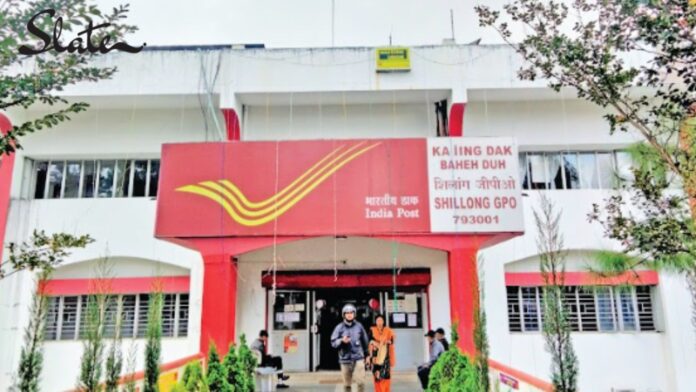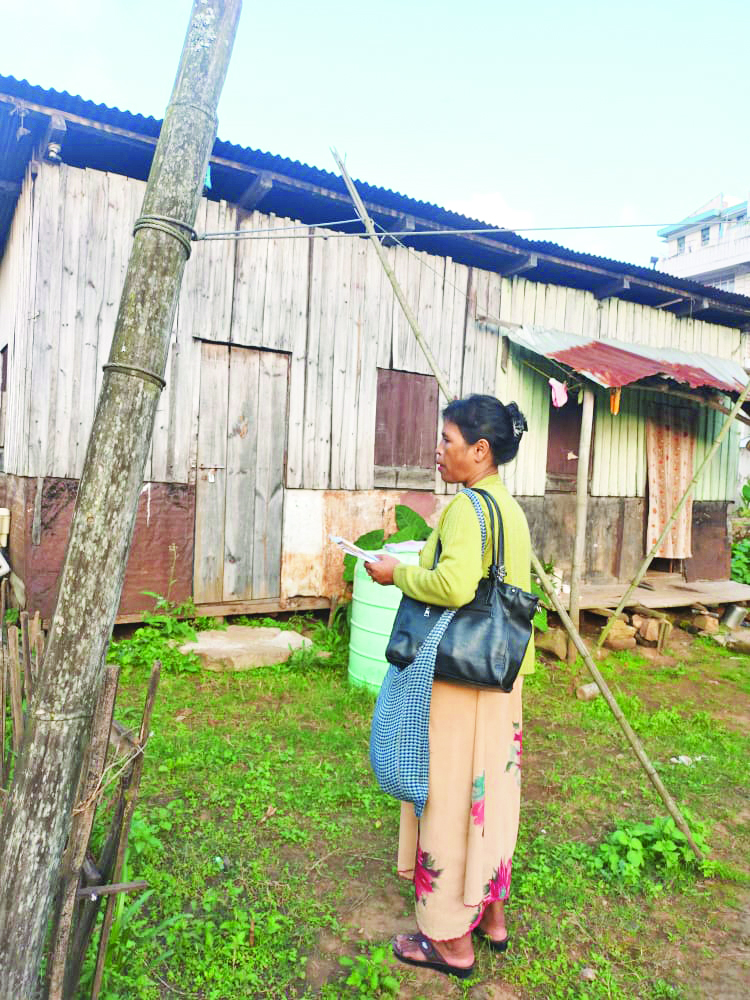By Garry K Wahlang
Human civilisation thrives on communication. This has been the key to our survival and shows that we’re not islands. No wonder, then, that the history of humankind is closely linked with the post office.
That technology is changing the postal system is evident. Perhaps a day will come when it will evolve into an entity we cannot yet imagine.
What remains, though, are the postal (or dak) routes and bungalows, silent observers of time. They’ve also existed in the North East, connecting Sylhet (erstwhile East Bengal) and undivided Assam.
Post in The Hills
Prior to digitisation, the postal service was the only form of communication available. It enabled users to send practically anything, anywhere. Letters and mails were sent to our loved ones during special occasions.
With the coming of the digital age, people can easily contact people through social media platforms like WhatsApp and Facebook, among others, and email. Despite this, postal services will still be important to us. Times have changed and so has our way of life.
Local villages, however, are still centred around their post offices.
Every year, on October 9, World Post Day is observed around the world. Recently, National Postal Week was observed in Shillong from October 9-14.
Subrat Das, the Chief Postmaster General of the North Eastern Circle, announced a week-long programme, beginning with World Post Day, followed by Vittiya Sashaktikaran Diwas, Philately Day, Mails and Parcels Day, and concluding with Antyodya Diwas.
Speaking on the changes in the postal system, Das stated, “There were no computers when I joined the Department in 1992. I had to travel to other offices frequently. Thanks to technology, we can accomplish considerably more at the same time now, instantly accessing information online through the six states. Similar to how we worked 30 years ago, items can now be seen through Google Meet without having to go such great distances.”
Chuckling, he added, “Our workplace right now is on a smartphone. Back in my day, money order services were often used, but not anymore. My parents used to send money for my tuition and pocket money from Bhojeshwar while I was attending school in Delhi. But now people use Google Pay; things have changed over the years.”
It is no surprise that India Post is modernising itself to work hand-in-hand with technology.
In his words, “IT revolution is seen in various operations of the post office. Express mail, parcel, core banking solutions, and insurance are some aspects where technology plays a big role now. That said, the post office is a physical identity with a human face. Given its long history, human emotion is attached to the postal service here. Each post office, irrespective of its size, is unique, reflecting the landscape and culture of a said village or locality, and will remain, a microcosm of society.”
The digital part of the post office is reflected through the provision of ‘State-of-the-Art’ services to the customers at large, across the counters.
“The old charm of the traditional post office is still there, side by side with modern technologies. It is still a physical entity, so people go to the counter,” Das highlighted.
Our conversation steered toward the mail carriers – people who have kept the post alive. There was a time when they would diligently deliver news to every doorstep. Gone are the lanky frames, caps and coats, including the bicycles, they rode… only the previous generation remembers them fondly, reminiscing a time that was.
On how technology has affected them, the Chief Postmaster General said, “When somebody orders money, the postman/woman delivers it to their doorstep, instead of an ATM, as if the latter travels physically through the postal worker. India Post tries to marry the modern with the traditional – the use of technology will remain with a human face. Philately is a physical part of the post as well. One can still touch and feel the stamps.”
He further added how India Post is using ‘drones’ in the remote areas of Arunachal Pradesh to deliver postal parcels. Even now, certain spaces are not easily accessible or more prone to natural disasters.
The North Eastern Circle of India Post will finalise the use of drone services to deliver parcels. Whenever the parcel is booked, a tracker system will guide customers, where they can track the package and know when it is delivered.
At Every Doorstep
Hitesh Saikia, Assistant Postmaster, Shillong GPO, said, “I’ve been working since 2004. Currently, I am working at postal mail of all the districts within Meghalaya, except Garo hills. Back then, we used to deliver mail, however, the quantity has gone down,” adding that the postal service is very much in use.
Earlier, the postman would deliver around 500 to 1000 on average.
Smiling, he said, “There were a lot of staff working in the department, but now, very few remain. Over the years, the number of employees has gone down. We have moved away from the traditional way of delivery, everything is computerised. Where the postal service is concerned, customers now have access to the India Post website.”
“Earlier, we ensured manual entries, with paperwork being a time-consuming aspect. Technology has taken over,” Saikia added.
Sharing an anecdote, he spoke about customers who understood neither English nor Hindi and how it made conversation difficult; improvisation was key to survival in such situations. Humorously, he added, “With the digital age, what we have at hand is a lot of time… but how to pass it.”
On the importance of change, Saikia stressed on the need to improve infrastructure and increase the capacity reach of India Post to the remotest corners of rural Meghalaya, to reach out to customers in need of the postal service.
He remains hopeful, adding how educated people are being employed in the department. “It is somewhat better than earlier times. The future is bright for postal services. Technology is only possible with a human touch.”
Meet Lakhamti Wahlang, a postwoman in Shillong GPO. Her journey has been interesting.
While on her way to deliver mail, she said, “I joined as a postwoman in 2003, and was first posted in Agartala. I have the best memories from that time. My senior postmen were compassionate and helpful even though I was not from that place. Within a few months, I was back home.”
Even though a uniform was provided, she wore her traditional jainsem in Agartala while delivering mail.
On the inner workings of the post office, she said, “Mails were already packed in boxes serially and category-wise – ordinary mails and the accountables, comprising speed post, parcels, and money orders – among others. Then, we started our journey to deliver these packages to our customers in designated localities.”
Echoing Saikia, she recalled the huge number of mail that would be delivered once upon a time. “The quantity of deliverables has changed now. Earlier, there were 50 to 60 ordinary mails and (approximately) 30 to 50 accountables that I delivered per day.”
Wahlang remembers the kindness of customers, particularly from Pynthor locality.
On whether she faces gender discrimination, she said, “Sometimes, customers joke when they hear a woman’s voice. Some apologise for their conduct, but misunderstandings arise.”
Expressing in an optimistic tone, she emphasised the positive aspects of digitisation. “Mobile phones have helped us greatly. Because customers get notifications upon the arrival of their mail and packages in the post office, it has reduced a lot of unnecessary hurdles. Most of the time, they come to take their packages from the office itself. When people change their address, for instance, we get to know about that too. Back then I had to search all over the area to deliver packages, sometimes, it took over a week to find the changed address of a customer.”
Wahlang compared the rural and urban scenario; her experience at Umktieh, Ri Bhoi presented hurdles, in particular the difficulty of delivering mail to several remote villages of Umroi.
Speaking to them made it clear that postal services are not only crucial to people and businesses, but they are also important to the government since they work with other offices to issue notices, memos, and other important information. They also provide vital community services like universal mail delivery, parcel delivery, and access to banking, benefits, and bill-paying options.
They instill a sense of collective identity that links people with each other.
Whether the new-age postal services remain relevant, time can only tell. As long as people need postal services, it will move ahead with the times. Even if the postman or the postwoman may no longer be around for long.



